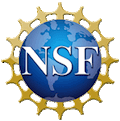Georgios Paliouras
Abstract
Abstract: One of the major innovations in personalization in the last 20 years was the injection of social knowledge into the model of the user. The user is not considered an isolated individual any more, but a member of one or more communities. User communities have been facilitated by the striking advancements of electronic communications and in particular the penetration of the Web into people’s everyday routine. Communities arise in a number of different ways. Social networking tools typically allow users to proactively connect to each other. Alternatively, data mining tools discover communities of connected Web sites or communities of Web users. In this tutorial, the focus is on the latter type of community, which is commonly mined from logs of users’ activity on the Web. In the tutorial we will recall how this process has been used to model the users’ interests and personalize Web applications. On this basis, we will examine the effect of recent developments on the Web and particularly the advent of the social Web. We will explain how this development draws together the different viewpoints on Web communities and introduces new opportunities for community-based personalization. In particular, we will analyse the concept of active user community and show how this relates to recent efforts on mining social networks and media.
Outline
The tutorial will explain and expand on the basic concepts introduced in a recent article by the presenter [1]. It will hence take the following structure:
- Web communities (30 min): The first part of the tutorial will clarify and explain the different uses of the term Web community: (a) communities of users of a particular Web site, (b) communities of nodes of the Web graph, (c) Web sites serving Web-based communities.
- Discovering user communities from data (60 min): This part will explain how data mining is used to identify user communities. We will look at the types of usage data that is used, the way in which it is transformed, the calculation of distances between users and between items and the formation of user community models. Additionally, we will look at different personalization approaches, based on user communities. Interesting applications beyond collaborative recommendation will be mentioned in a variety of domains, ranging from education to culture and finance.
- User communities in the social Web (60 min): In this part of the tutorial we will revisit the different types of Web community, in the light of the social Web, in order to sketch a new research opportunity for user modeling, namely the discovery of communities of active Web users. Being both consumers and producers of content, users of the social Web take a more active role that introduces opportunities and challenges in the discovery of communities. We will examine current efforts in discovering communities in the Social Web and discuss exciting open issues.
- Concluding discussion (30 min): The last part of the tutorial is planned to be more interactive. Based on preliminary ideas about the more general implications of discovering communities in the social Web, we will attempt to draft a research plan in this fascinating research area.
FILES
- Tutorial slides [PDF]
PRESENTER
- Georgios Paliouras, Institute of Informatics & Telecommunications, NCSR “Demokritos” [paliourg@iit.demokritos.gr]
DATE aND DURATION
Monday, June 10, 2013 – Half Day/Afternoon
Short bio
 Georgios Paliouras is a Senior Researcher and head of the Intelligent Information Systems division of the Institute of Informatics and Telecommunications at NCSR “Demokritos”. His research has focused on knowledge discovery and machine learning methods and their application to user modeling, information extraction, text categorization, event recognition and ontologies. He has participated in several national and internationalresearch projects and has managed some of them. He has also served as board member in national and international scientific societies. Additionally, he is serving in the editorial board of international journals and has chaired international conferences. Among them, he is in the editorial board of the User Modeling and User-Adapted Interaction (UMUAI) journal and has chaired the User Modeling conference in 2007. He is co-founder of the spin-off company i-sieve technologies.
Georgios Paliouras is a Senior Researcher and head of the Intelligent Information Systems division of the Institute of Informatics and Telecommunications at NCSR “Demokritos”. His research has focused on knowledge discovery and machine learning methods and their application to user modeling, information extraction, text categorization, event recognition and ontologies. He has participated in several national and internationalresearch projects and has managed some of them. He has also served as board member in national and international scientific societies. Additionally, he is serving in the editorial board of international journals and has chaired international conferences. Among them, he is in the editorial board of the User Modeling and User-Adapted Interaction (UMUAI) journal and has chaired the User Modeling conference in 2007. He is co-founder of the spin-off company i-sieve technologies.















